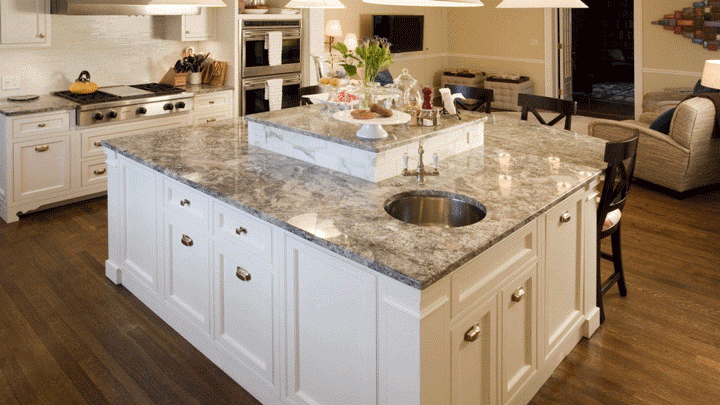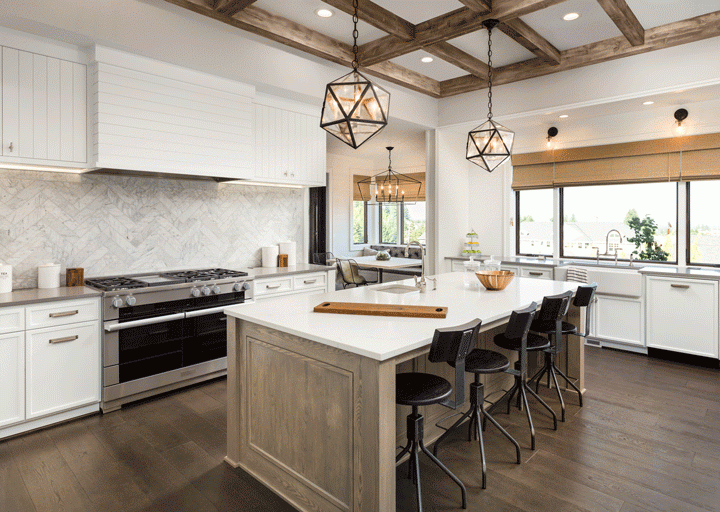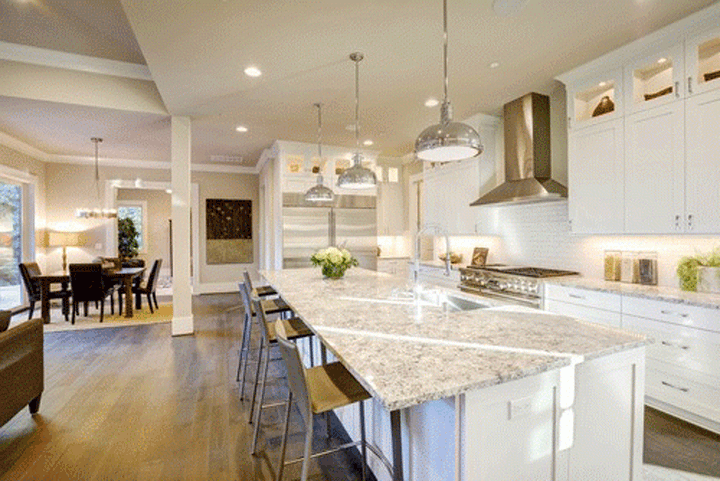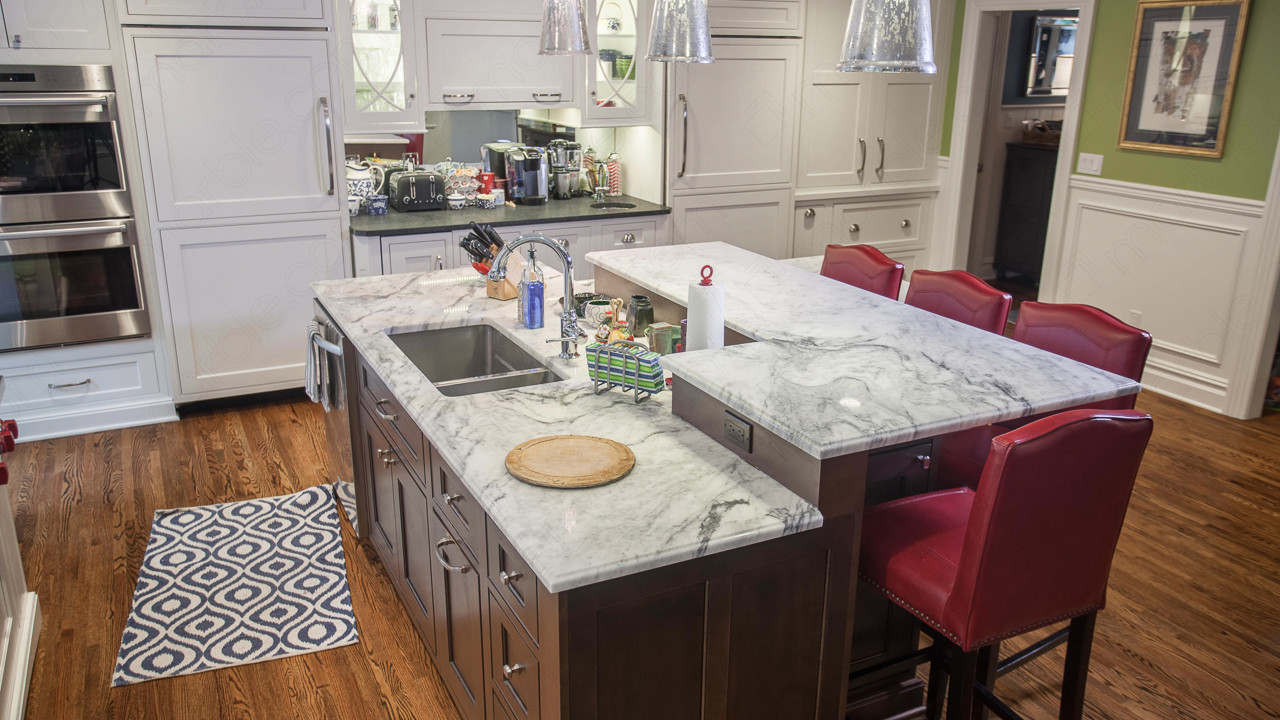
Table of Contents
Installing a kitchen island is a great way to add counter space, storage space and enhance the style of your kitchen. Adding a large kitchen island can make a significant visual impact in your home. This guide can help you develop a good plan for installing a new kitchen island.
[get_quote]
Developing a Plan: What is the Purpose of Your Kitchen Island?
To help determine what you want your new kitchen island to look like, you will first need to decide what the purpose of your island will be. Is the main purpose of your island to prepare meals, add more seating, more counter space, more storage or another reason? Determining what you will use your kitchen island for will help decide other factors, such as size. A large kitchen island will allow for the incorporation of several kitchen elements, such as a cooktop and a sink. You may even choose to incorporate a breakfast bar, which will need bar stools. On the other hand, a small kitchen island may not be able to fit these elements.
How to Determine the Size of Your Kitchen Island
Other than what kitchen features you want to incorporate into the structure, there are several other factors that can determine if a large kitchen island is right for your space. The main factor in deciding the size of your kitchen island should be the size of your kitchen. If you have a large kitchen, you can fit a large island, while if your kitchen is small, you may need a small island or no island at all. If your kitchen is less than 13 feet wide, you should stay away from adding a kitchen island, as you simply do not have enough space to make it a comfortable fit.
Your kitchen island should ideally allow for 42 to 48 inches of open space around it. Your island should also be at least 2 feet long, although 3 feet is the recommended length. If you will not have at least this much space around your island or be able to have an island this size, that means your kitchen is likely too small to fit one.
| 42-48 inches of open space around the outside |
| At least 2 feet long (preferably 3 feet) |
What if Your Kitchen Cannot Fit an Island?
If you had your heart set on installing an island in your kitchen but have determined that one will not fit, not all hope is lost. In cases like these, you can opt for a mobile butcher block station. These are kitchen carts that essentially act as an island on wheels. This is helpful because you can place the cart wherever you want and simply move it out of your way when you need to. Kitchen carts are a great way to have additional storage space.
What Materials Can You Use for a Kitchen Island?
Regardless of size, you can use any material that you would use for a countertop for your kitchen island top. These include natural stones such as granite, marble, quartzite and others, as well as alternative materials like stainless steel or wood. You can choose to match your countertop or incorporate a different material into your kitchen to enhance the design of the room.
What Are Some Kitchen Island Mistakes?
Narrowing down the size and materials you want for your kitchen island can help you effectively plan for the installation. However, so can knowing what mistakes to avoid when incorporating a kitchen island. Below are some mistakes that you will want to avoid.
Not Thinking About the Work Triangle
The work triangle – the path between your sink, stove and refrigerator – is an essential part of your kitchen, as you will frequently use all three and will need easy access. If your kitchen island will obstruct this space, you should not install one.
[get_quote]
Not Thinking About Sinks and Appliances
When you are planning to install your kitchen island, you will need to keep sinks and appliances in mind if you want to incorporate them into the structure. For example, sinks, stoves, microwaves and dishwashers will require electricity and plumbing elements. You will need to make sure your island has electricity and plumbing properly connected.
Condensing the Space
You will want to maximize your space without condensing it. If you do not have room for certain elements, do not try to cram them in. That will only make the area uncomfortable. Condensing your space will lead to not having enough room to prepare meals or not having enough room to sit comfortably at a breakfast bar.
Your kitchen island can become a focal point of your home if you carefully plan out certain elements before installing. While there may be some things you wanted from your kitchen island, you might not be able to follow through if your kitchen does not allow for it. Ideally, you want a kitchen island that is comfortable for everyone in the house. If your kitchen is small, having a large kitchen island will not be conducive to comfortability and accessibility. Through reviewing this guide, you can assess the different factors and help determine what type of kitchen island will work for your home.
















 The article helped me immensely
The article helped me immensely
 I’m now more informed on the subject
I’m now more informed on the subject
 I have questions about Marble.com
I have questions about Marble.com
 The article was not accurate at all
The article was not accurate at all
 There is a serious lack of information
There is a serious lack of information
 I have questions about Marble.com
I have questions about Marble.com